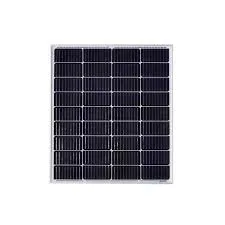what is a string inverter solar
What is a String Inverter in Solar Energy Systems?
In the world of solar energy, various components work together to capture sunlight and convert it into usable electricity. One pivotal element in solar power systems is the inverter, particularly the string inverter. Understanding the role and functionality of a string inverter can help solar energy users optimize their systems for better performance and efficiency.
Definition of a String Inverter
A string inverter is a type of inverter that is commonly used in photovoltaic (PV) systems to convert direct current (DC) electricity generated by solar panels into alternating current (AC) electricity, which is suitable for use in homes and businesses. The term string refers to the way solar panels are configured in a series connection, forming what is known as a string. Typically, a string of solar panels is linked to a single inverter, allowing the inverter to manage the output of that entire string.
How Does a String Inverter Work?
The operation of a string inverter is relatively straightforward. When sunlight hits the solar panels, they produce DC electricity. This electricity is then sent to the string inverter, which performs the essential job of converting DC into AC. The AC output can either be used immediately by the household appliances or fed back into the grid, depending on the grid connection and specific regulations in place.
One of the key features of string inverters is their ability to optimize the power output from the string of solar panels. Most string inverters are equipped with maximum power point tracking (MPPT) technology, which continuously adjusts the inverter's performance to ensure that the solar panels operate at their peak efficiency, regardless of changes in sunlight conditions or temperature.
Advantages of String Inverters
what is a string inverter solar

1. Cost-Effectiveness String inverters are generally less expensive than other types of inverters, such as microinverters or power optimizers. This makes them a popular choice for residential and commercial solar installations.
2. Simplicity The design and installation of string inverters are relatively straightforward. Fewer components mean easier maintenance and troubleshooting when issues arise.
3. Proven Technology String inverters have been around for a long time and are a well-established technology in the solar industry. Their reliability and efficiency have made them a trusted choice for many solar installations.
4. Centralized Management With a string inverter, it is easier to monitor and manage the performance of an entire array of solar panels from one centralized unit.
Limitations of String Inverters
While string inverters offer several benefits, they also have limitations. One of the main drawbacks is that all panels in a string are affected by the performance of the weakest panel. If one panel experiences shading or is malfunctioning, it can impact the overall energy production of the entire string. This is in contrast to microinverters, where each panel operates independently, thus minimizing the impact of any single panel's performance.
Conclusion
In summary, a string inverter serves as a critical component in solar energy systems, allowing for the effective conversion of solar energy into electricity that can be utilized in homes and businesses. While they offer cost-effective and reliable solutions, it is essential to consider their limitations, especially concerning performance variances among connected solar panels. As the solar industry continues to evolve, understanding the functionality and advantages of string inverters will help consumers make informed decisions about their solar energy systems, ultimately promoting greater efficiency and sustainability in harnessing solar power.
-
String Solar Inverter: The High-Efficiency Solution for Smart Solar EnergyNewsJul.14,2025
-
Revolutionizing Rooftop Energy with the Power of the Micro Solar InverterNewsJul.14,2025
-
Power Independence with Smart Off Grid Solar Inverter SolutionsNewsJul.14,2025
-
On Grid Solar Inverter: Powering the Future with Smart Grid IntegrationNewsJul.14,2025
-
Monocrystalline Solar Panels: High-Efficiency Power for the Future of Clean EnergyNewsJul.14,2025
-
Bifacial Solar Panel: A Smarter Investment for Next-Generation Energy SystemsNewsJul.14,2025







